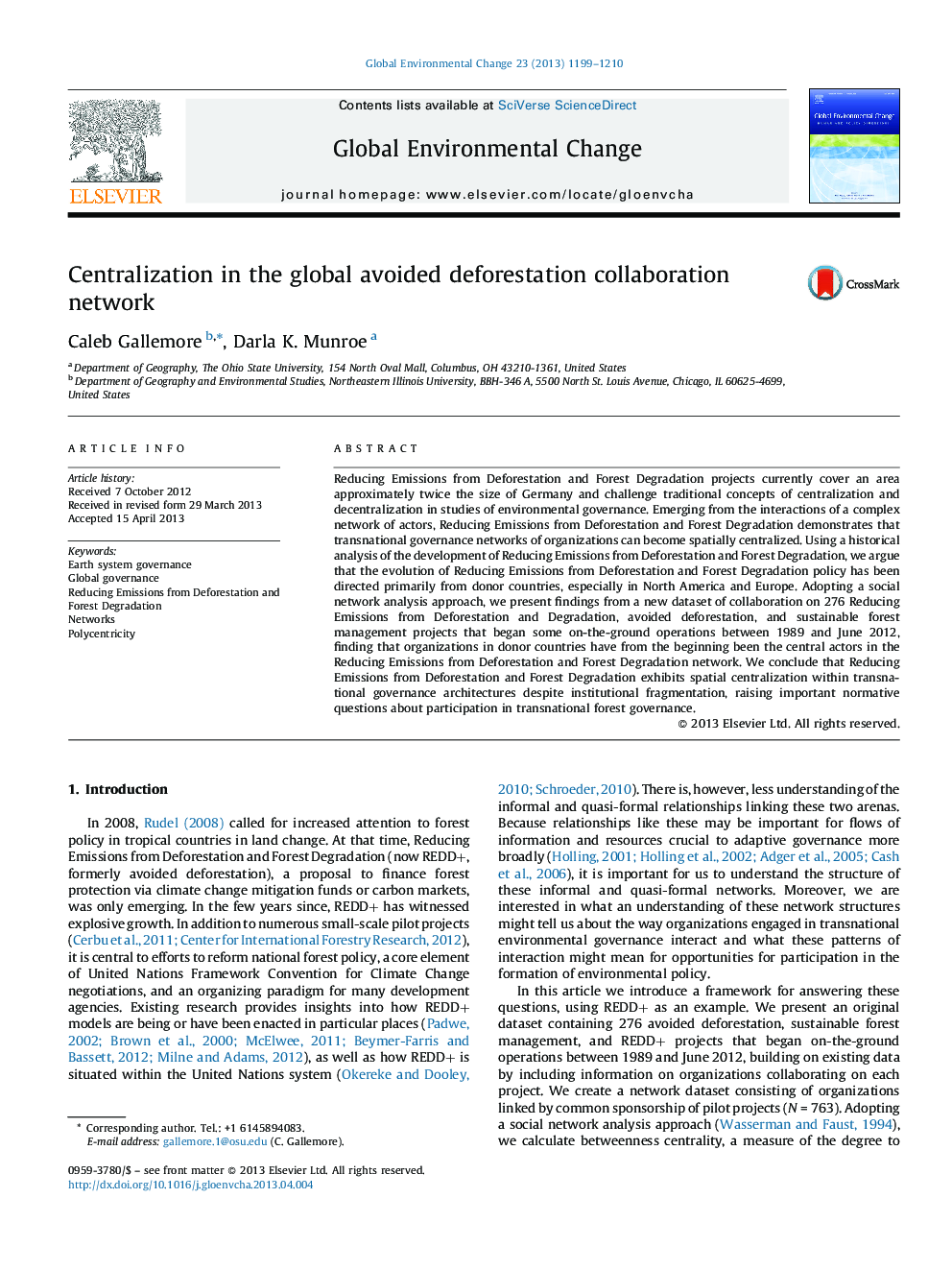| Article ID | Journal | Published Year | Pages | File Type |
|---|---|---|---|---|
| 10505110 | Global Environmental Change | 2013 | 12 Pages |
Abstract
Reducing Emissions from Deforestation and Forest Degradation projects currently cover an area approximately twice the size of Germany and challenge traditional concepts of centralization and decentralization in studies of environmental governance. Emerging from the interactions of a complex network of actors, Reducing Emissions from Deforestation and Forest Degradation demonstrates that transnational governance networks of organizations can become spatially centralized. Using a historical analysis of the development of Reducing Emissions from Deforestation and Forest Degradation, we argue that the evolution of Reducing Emissions from Deforestation and Forest Degradation policy has been directed primarily from donor countries, especially in North America and Europe. Adopting a social network analysis approach, we present findings from a new dataset of collaboration on 276 Reducing Emissions from Deforestation and Degradation, avoided deforestation, and sustainable forest management projects that began some on-the-ground operations between 1989 and June 2012, finding that organizations in donor countries have from the beginning been the central actors in the Reducing Emissions from Deforestation and Forest Degradation network. We conclude that Reducing Emissions from Deforestation and Forest Degradation exhibits spatial centralization within transnational governance architectures despite institutional fragmentation, raising important normative questions about participation in transnational forest governance.
Keywords
Related Topics
Life Sciences
Environmental Science
Environmental Science (General)
Authors
Caleb Gallemore, Darla K. Munroe,
